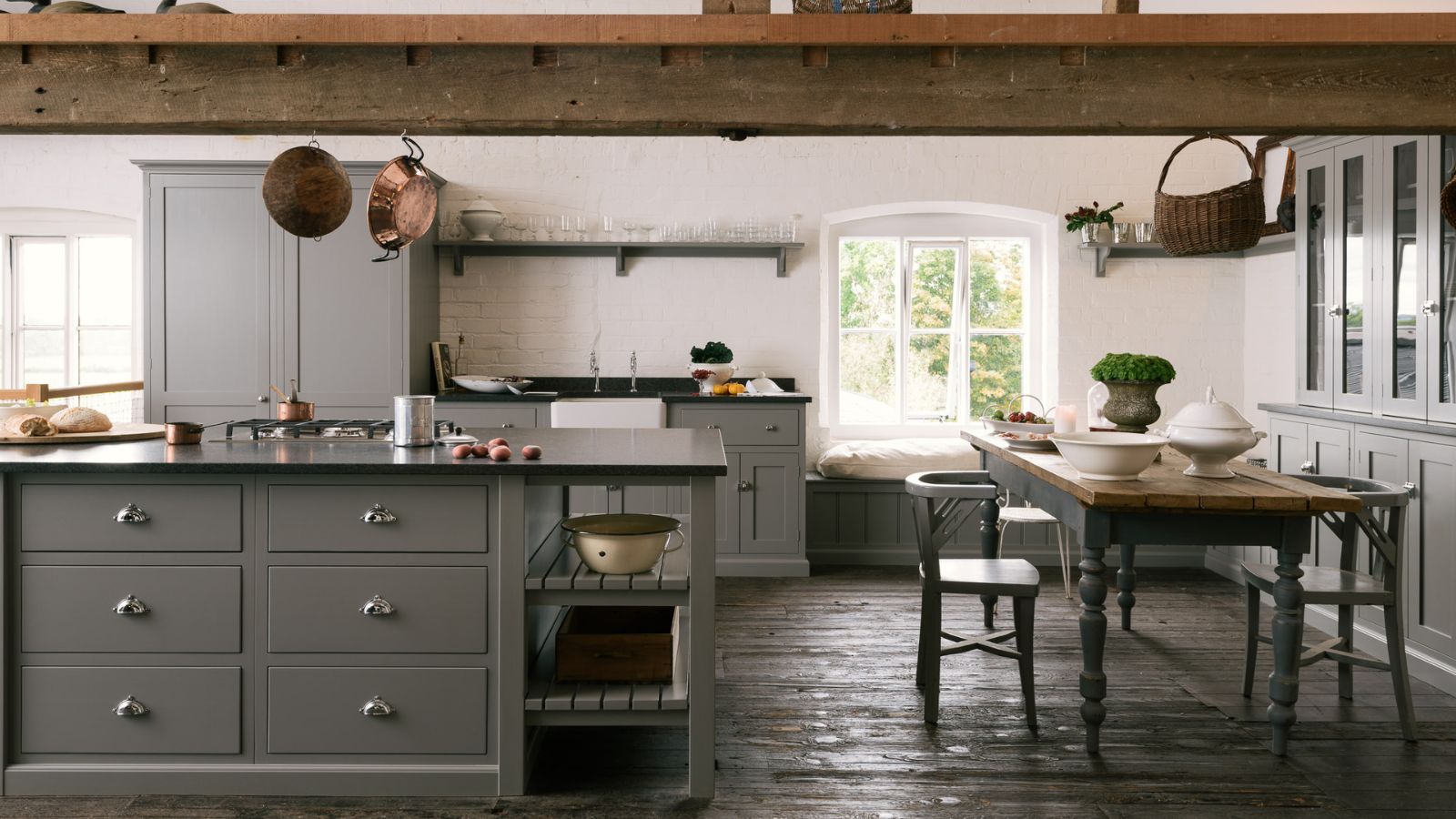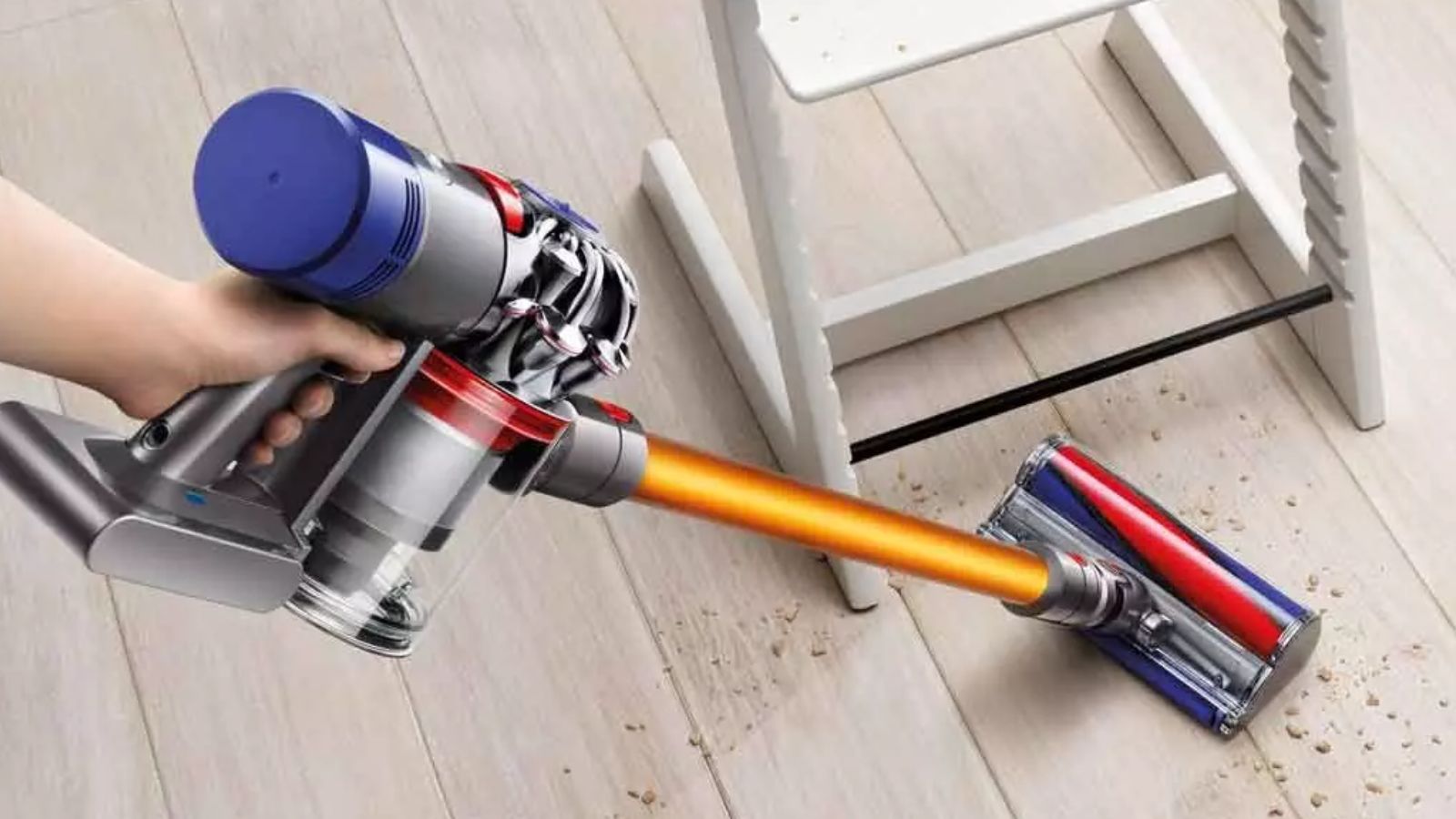How to clean a kitchen sink – and make it sparkle
From stainless steel and ceramic to copper and composite designs, here’s how to clean a kitchen sink


It gets so much daily use that knowing how to clean a kitchen sink is crucial for excellent kitchen hygiene and a smart-looking room.
It’s important to be aware of what the kitchen sink is made from for optimum care, although there are many products that can be used across different types to freshen them and maintain their appearance.
With the right kitchen cleaning tips any kitchen sink can be kept in good shape and this is the lowdown including advice from the experts.
How to clean a kitchen sink
The hardworking sink should always be part of the routine, and both pantry ingredients and store-bought products can be called into service.
Queen of Clean Lynsey Crombie is a fan of a store-bought product for best results. ‘Clean the sink using a multipurpose spray and buff dry,’ she advises. ‘If you have stubborn water marks, I highly recommend Bar Keepers Friend. It will remove any marks and bring your sink up like new.’
The material you have chosen for your kitchen sink ideas will affect how you clean it. This expert advice will reveal how to clean a kitchen sink whatever its type.
How to clean a stainless steel sink
Stainless steel is so called because it resists rusting not because marks won’t show up on a sink made from this material.
‘The kitchen sink gets easily stained, as just about everything goes down it,’ says Chris Wootton, managing director of Poppies cleaning service. ‘Splodges show up mostly on light porcelain or solid resin surfaces, but even stainless steel is prone.’
Fortunately, if you have baking soda left over in the pantry from cleaning an oven, you’re ready to tackle a stainless steel kitchen sink.
‘First, rinse the sink and dry it and then apply some baking soda straight on to the stains or on to a cloth and scrub the sink to remove any lingering stains,’ says Chris. ‘Baking soda also fights drain odors. Then add some white vinegar into the sink and allow this to react with the baking soda. Rinse with clean water then wipe dry with a clean cloth or kitchen paper.’
If you want your sink to smell lovely and fresh as well, start by giving it a rinse with water then sprinkle with the baking soda. Rinse with water then sprinkle with baking soda. With a non-abrasive sponge, scrub the surface in a circular motion. Rinse with white vinegar, which reacts with the baking soda to fizz up and naturally disinfect the sink. Rinse with water then rub the sink with orange or lemon peel. Not only does this give the sink a fresh, zesty aroma but it also helps give it a shine, too. To finish, blot a piece of kitchen towel with olive oil and rub all over the sink.
How to clean a ceramic sink
Many homes have a ceramic sink and while these can stain easily, cleaning a kitchen sink made from this material is easy.
’Clean regularly with hot, soapy water and a soft cloth,’ advises Paul Illingworth, design manager at Abode. ‘This is much easier and more suitable for the sink finish than infrequent heavy cleaning. Use a soft or microfiber cloth and a 50 per cent mix of water and white vinegar to remove limescale deposits. Rinse thoroughly after and do not leave the vinegar in contact with the surface. A nylon scratch pad or toothbrush can be used on difficult areas.
‘Dry the sink after use to delay future buildup and always rinse the sink with water after cleaning or preparing food.
‘Never use the following: spray cleaners, scouring pads, scouring powders, scouring liquids, bleach and highly concentrated drain cleaners containing hydrochloric or sulphuric acid or similar.’
How to clean an enamel or porcelain sink
What about cleaning a kitchen sink made from enamel or porcelain? ‘Similar to ceramic, an enamel or porcelain sink is so easy to clean using a few ingredients you already have at home,’ says Lucy Searle, global editor in chief of Homes & Gardens.
‘To start, make up a mix of half water and half white vinegar. Moisten a soft cloth with the solution and give the sink a thorough clean. Rinse with water then attack tough stains with a little baking soda and water paste. Use an old toothbrush and work directly into the stain. Rinse once more and use half a lemon to finish off for a great fresh smell.’
How to clean a Corian, granite or quartz sink
Known as solid surface or composite sinks, these are all different in the way they react with cleaning products and pantry solutions.
For granite or quartz, make up a paste of baking soda and white vinegar then rub into the sink’s surface using a soft cloth. Rinse with water and dry with a cloth. Rub a little olive oil into the sink and leave for a few minutes before wiping off with a piece of kitchen towel.
Corian sinks can be cleaned by sprinkling some baking soda directly into the sink. Use a cloth or toothbrush to remove any stains then pour a little white vinegar into the sink and leave to fizz up. Rinse with water and finish by rubbing a cut lemon around the surface then rinse again.
How to clean a fireclay sink
Fireclay is much more resistant to abrasions and cleaners than enamel so you can be bit rougher with it. Rinse it with water and dry. Sprinkle some baking soda on to a cloth or sponge and scrub. Add some white vinegar to the sink and leave it to fizz before rinsing. Wipe with a kitchen towel and, every month, apply some natural liquid wax using a soft cloth, as this will help to seal the sink and make liquids flow down the drain more easily.
How to clean a copper sink
These metallic designs look stunning but cleaning a kitchen sink made from copper demands care because it can become damaged. The takeaway? Don’t use anything too harsh or abrasive. To clean, just mix mild soap with clean water and gently rub with a soft cloth.
What is the best thing to clean a kitchen sink with?
A mixture of mild dish soap and water is the best way to clean most sinks, particularly those with more delicate surfaces like copper or enameled cast iron. Cleaning down the sink after every use is one of the many things people with clean kitchens always do to make weekly deep cleans a bit quicker.
How do I deep clean my kitchen sink?
To deep clean a kitchen sink remember the one-to-two ratio: one part baking soda to two parts white vinegar. First place the baking soda down the drain, followed by a slow pour of white vinegar. Wait 15 minutes for the bubbling duo to do its thing, then wash away with boiling hot water to rid the drain of any remaining residue.
Sign up to the Homes & Gardens newsletter
Design expertise in your inbox – from inspiring decorating ideas and beautiful celebrity homes to practical gardening advice and shopping round-ups.

Hayley is an interiors journalist, content provider and copywriter with 26 years experience who has contributed to a wide range of consumer magazines, trade titles, newspapers, blogs and online content. Specialising in kitchens and bathrooms, she has twice won the CEDIA Award for Best Technology feature. Hayley writes for H&G about kitchens, bathrooms, cleaning, DIY and organizing.
-
 Should I choose a kitchen island or a kitchen table? This is the expert advice that helped me decide
Should I choose a kitchen island or a kitchen table? This is the expert advice that helped me decideIt's all about how you use your space
By Molly Malsom Published
-
 A $170 limited-time discount makes this the most affordable Dyson cordless vacuum on the market right now
A $170 limited-time discount makes this the most affordable Dyson cordless vacuum on the market right nowYears after its release, the Dyson V8 still impresses us with its features and power
By Dan Fauzi Published